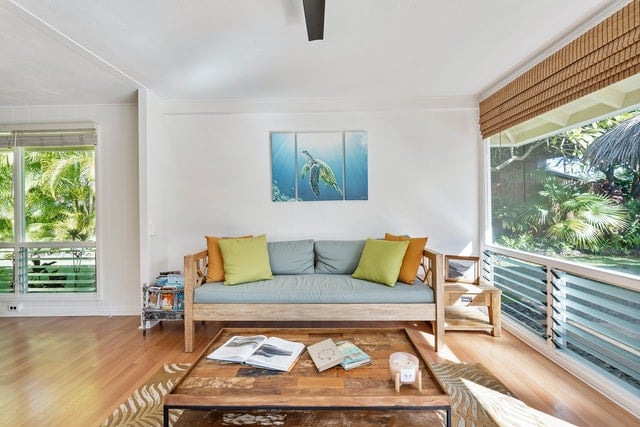5 Ways You Can Make Your Living Room More Colorful

Picture from Pexels
You have a great sofa, some ornamental pieces, a coffee table, and other items that contribute to the comfort of your living area.
Colors may contribute to the sense of a larger or smaller space. When space is restricted, and natural light is scarce, light colors are the way to go. If the space is spacious, darker colors create a cozier, more comfortable atmosphere.
However, it is also necessary to make it visually appealing. Adding a splash of vibrant color to the space may accomplish this. The trick is to keep it subtle and not go crazy.
1. Consider the Contrast
A high-contrast space combining both bright and dark values of color, deep burgundy and light gold seems more distinct and defined than a low-contrast one such as saffron yellow with sage green. Therefore, consider employing strong contrast to emphasize a room’s formality and low contrast to offer relaxing aspects.
When combined, black and white (which are not colors but rather the addition or absence of light) have a formal aspect, similar to a tuxedo. However, white with beige creates a low contrast and a sense of tranquility. Combining white and black with gray provides a very low-key look that offers a relaxing environment.
2. Experiment With Texture
When arranging a living room, it’s easy to ignore texture. Incorporate splashes of color with well-placed and well-chosen toss pillows. Solids work well with floral furniture, patterned cushions go well with solid items, and mixing and matching patterns results in a spectacular variety of colors. Have fun playing with patterns and, if desired, use a solid to soften the effect.
3. Arrange some plants or a light in the area.
Placing plants in the living room adds a sense of freshness to the space. Choose low-maintenance plants such as succulents or lucky bamboo. Additionally, you may choose fake plants.
If you’re not a fan of plants, incorporate light into one of the corners. Choose a large one in a copper hue or a bright one.
Nature provides the most vibrant hues for your living area. Choose vegetation that is adapted to survive in low-light environments. If, on the other hand, your thumb isn’t the greenest in the neighborhood, go for lifelike fake flower arrangements. It’s simple to trick the eye with today’s realistic fake flowers and plants.
A saltwater or freshwater nano aquarium, regardless of size, can be an excellent addition to any area needing some unique flare. Obviously, the larger the tank, the greater the influence on the room.
4. Switch on a New Lamp
A new lamp, revamped lamp, or even a shade update injects color and individuality into a living area. Add a couple of lights surrounding a piece of art or furniture for visible splashes of color. Make an attempt at constructing your lamp by upcycling things or salvaged components into fixtures that will infuse your house with fresh individuality.
5. Use Color to Express Your Emotions
People typically identify colors with their meanings. For example, red may symbolize fire, blue the air and sea, yellow the sun, and brown and green symbolize trees. These are often seen as emotional reactions to color rather than cerebral reactions. Make the most of these emotional connections in a place by deciding on the emotional impression you want the area to have. Would you want it to be more animated? Make a selection of reds and yellows. If you like a more modest look, consider blues and browns.
Color’s emotional effect should correspond to the activities taken on in the area. If the area is for relaxation, such as a bedroom or family room, pick deeper tones of soothing hues such as greens, blues, and browns.
As a bonus
Light and Color Refract
Are you looking for a way to fill an empty wall in your living room? Consider mounting a giant mirror on that enormous, barren, uninteresting wall. The mirror will reflect vast swathes of color and light from the rest of your living room, and you don’t have to paint anything to do it.
Color psychology is a very effective interior design technique that has a greater influence on the mood of space than any other component. Different tints elicit different feelings, so when picking your colors, it’s important to consider the kind of mood you’re trying to create and the colors that will assist you.
0
